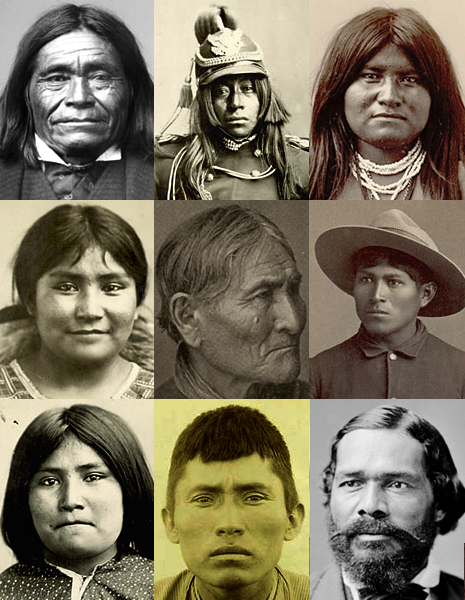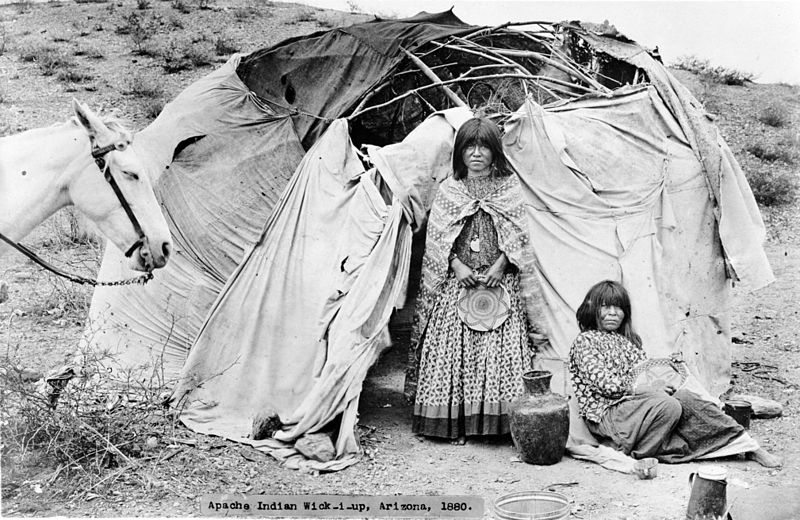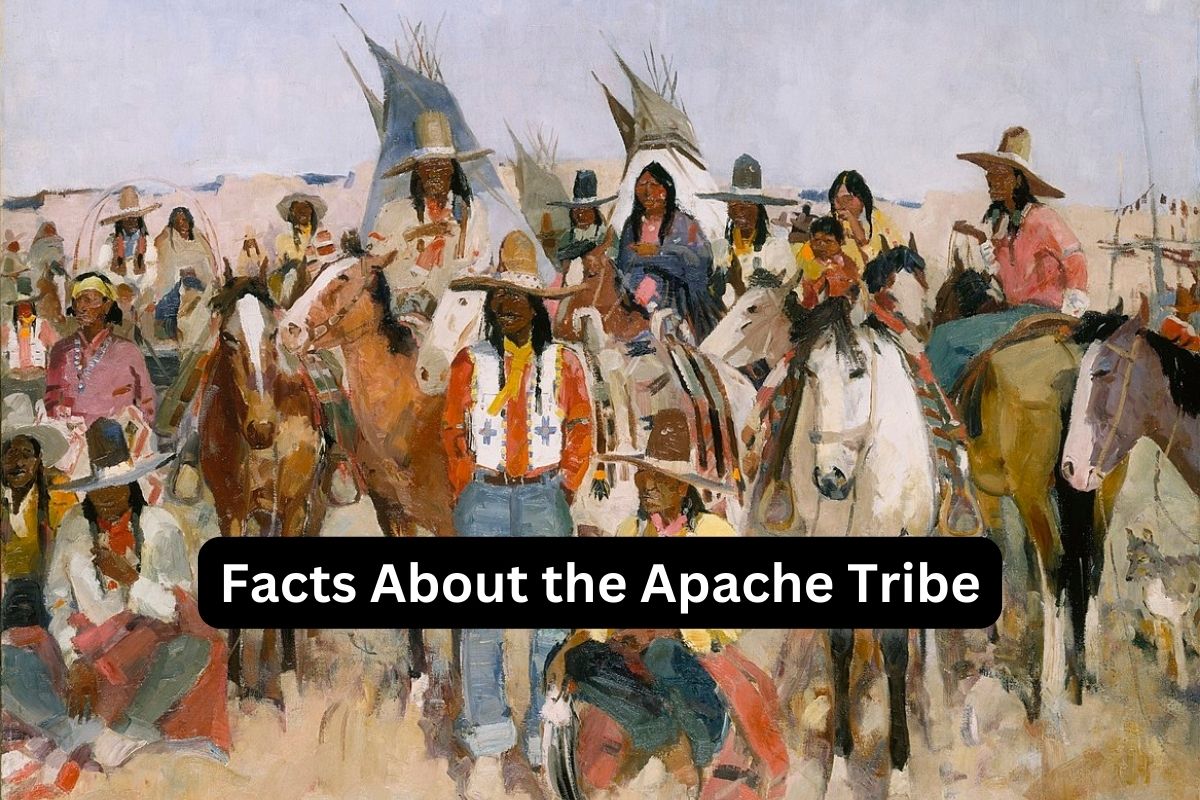The Apache Tribe is a Native American group with a rich history rooted in the southwestern United States, particularly in regions encompassing Arizona, New Mexico, and Oklahoma.
They are comprised of distinct groups like:
- Western Apache
- Chiricahua Apache
- Jicarilla Apache
- Lipan Apache
- Mescalero Apache
The Apache people have a strong warrior tradition and a profound connection to the land.
With their expertise in hunting, gathering, and later livestock herding, the Apache adapted to diverse environments and developed intricate cultural practices.
Their society is characterized by small bands led by chiefs or councils, and they have a matrilineal kinship system where lineage is traced through the mother’s line.
The Apache Tribe’s spirituality blends traditional beliefs with some Christian influences, while their artistic expressions in basket weaving and pottery showcase exceptional craftsmanship.
Despite historical challenges and conflicts, the Apache Tribe perseveres, maintaining their cultural heritage, tribal governance, and efforts to improve their communities’ well-being.
Apache Tribe Facts
1. The Apache Tribe is a Native American tribe that has a rich history in the southwestern United States
e Apache Tribe is a Native American tribe that has a rich history in the southwestern United States, primarily in present-day Arizona, New Mexico, and Oklahoma.
The Apache people are part of the larger Athabaskan language family, which includes various indigenous groups across North America.
Also Read: Facts About the Iroquois Tribe
The Apache Tribe’s ancestral lands spanned diverse landscapes, from rugged mountains and canyons to arid deserts and grassy plains.

2. The Apache Tribe consists of several distinct groups
The Apache Tribe consists of several distinct groups, each with its own language, customs, and traditions.
The Western Apache, also known as Coyotero Apache, inhabited central and western Arizona.
The Chiricahua Apache resided in southeastern Arizona and parts of New Mexico.
The Jicarilla Apache lived in northern New Mexico and southern Colorado.
The Lipan Apache were found in Texas, while the Mescalero Apache occupied parts of New Mexico and Texas. These groups shared some cultural similarities but also had distinct practices and dialects.
3. The Apache people have a strong warrior tradition and were known for their skills in battle and tactics
The Apache people have a strong warrior tradition and were known for their skills in battle and tactics. Throughout their history, they fiercely resisted colonization by various powers.
Also Read: Sitting Bull Facts
In the 16th century, they fought against Spanish expeditions led by figures like Francisco Vázquez de Coronado.
The Apache fiercely defended their territories against Spanish, Mexican, and later American forces. Their ability to adapt to different environments and their guerrilla warfare tactics made them formidable opponents. Famous Apache leaders such as Geronimo and Cochise gained renown for their military prowess and leadership.
4. The Apache Tribe is known for their expert horsemanship and ability to adapt to different environments
The Apache Tribe had a deep connection to the land and developed skills in hunting, gathering, and later, livestock herding. They were skilled hunters, pursuing game such as deer, elk, and bison. They also gathered wild plants and utilized their knowledge of the environment to sustain themselves.
With the introduction of horses by the Spanish, the Apache Tribe became skilled equestrians and expanded their hunting capabilities. In addition, they began to raise livestock such as horses, cattle, and sheep, adapting to a semi-nomadic lifestyle as they followed seasonal resources.
5. Apache society was organized into small bands, led by a chief or a council of leaders
Apache society was organized into small bands, which were usually composed of extended families. These bands were led by a chief or a council of leaders, with leadership positions based on qualities such as wisdom, bravery, and leadership skills.
Decision-making within the tribe involved discussions and consensus-building among community members. Leadership roles were not hereditary but were earned through merits and the respect garnered from the community.

6. The Apache Tribe had a matrilineal kinship system
The Apache Tribe had a matrilineal kinship system, where descent and inheritance were traced through the mother’s line. Family ties and social structure were often centered around the maternal side, and children belonged to their mother’s clan.
Women played significant roles in Apache society, with many influential female leaders and warriors. They had substantial decision-making power, especially within their own clans.
Apache women were skilled in various traditional arts, such as pottery, basket weaving, and beadwork, and their craftsmanship was highly regarded within and beyond their communities.
The matrilineal system also meant that women held important roles in passing down cultural and historical knowledge to future generations.
7. The Apache people practiced a combination of traditional spiritual beliefs and adopted some aspects of Christianity after contact with European settlers
The Apache people practiced a combination of traditional spiritual beliefs and adopted some aspects of Christianity after contact with European settlers. They believed in a spiritual connection with nature and the importance of harmony and balance.
Apache spirituality revolved around concepts such as the Creator, spirits, and ancestral connections. Rituals and ceremonies played a significant role in their spiritual practices, including the Sunrise Ceremony, which marked a girl’s transition into womanhood.
Over time, some Apache individuals and communities incorporated Christian elements into their spiritual practices, blending traditional beliefs with new influences.
8. The Apache Tribe is renowned for its artistry, particularly in basket weaving and pottery
The Apache Tribe is renowned for its artistry, particularly in basket weaving and pottery. Apache baskets are known for their intricate designs and high level of craftsmanship.
Basket weaving was traditionally done by Apache women and involved the use of various natural materials such as willow, yucca, and devil’s claw.
These baskets served both practical and ceremonial purposes and were decorated with intricate patterns and symbols.
Apache pottery was another form of artistic expression, characterized by its distinctive shapes and intricate painted designs. Both basketry and pottery continue to be practiced and celebrated within the Apache Tribe today.
9. The Apache Tribe experienced significant challenges and conflicts with European settlers, especially during the 19th century
The Apache Tribe experienced significant challenges and conflicts with European settlers, especially during the 19th century. The encroachment of settlers onto Apache lands and the establishment of forts and towns led to tensions and conflicts.
The Apache Wars, spanning from the 1850s to the 1880s, were a series of military campaigns and clashes between the Apache and the United States Army. Prominent leaders such as Cochise and Geronimo led their people in resistance against the encroachment and attempted subjugation by American forces.
These conflicts had a profound impact on Apache society, leading to the displacement of many tribes and the loss of their traditional lands.
10. Today, the Apache Tribe continues to maintain its cultural heritage and traditions
Today, the Apache Tribe continues to maintain its cultural heritage and traditions. They have reservations in Arizona, New Mexico, and Oklahoma, where they preserve their language, customs, and traditional practices.
Tribal government plays a vital role in the Apache communities, with elected leaders working to improve the well-being of their people.
Efforts are made to revitalize the Apache languages, promote education, and preserve cultural practices such as ceremonies, dances, and storytelling. The Apache Tribe also actively engages in economic development, including tourism ventures that allow visitors to learn about their history, culture, and contributions to the Southwest region.
